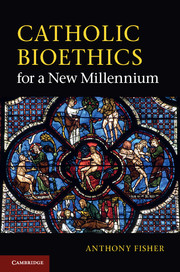Book contents
Chapter 11 - Regulation: what kinds of laws and social policies?
from PART IV - Protecting life
Published online by Cambridge University Press: 05 June 2012
Summary
A tale of three politicians
Ethical principles, as discussed in previous chapters, are one thing; how to turn them into real-life laws and practices is quite another. I begin this chapter with the stories of three fictional politicians dedicated to the ‘culture of life’ and their attempts to improve the situation in their part of the world.
Nightingale Singh battles infanticide in Asia
A politician and mother of seven girls has introduced a bill to ban female infanticide in India. While all homicide, at least after birth, is already technically illegal in her country, the law has long been ineffectual, being applied only to boy children; thousands of infant girls are killed with impunity each year. Mrs Nightingale Singh’s plan is to make it clear by legislation – followed by pressure upon the police and prosecuting authorities – that to kill a healthy child, simply for being a girl, is a crime. She realizes that this will leave unaffected the many hundreds of disabled babies of both sexes who are smothered each year – a tragedy in her eyes, though possibly less cruel than the lethal neglect called ‘nursing care only’ and ‘demand feeding’ suffered by children with disabilities in the (more ethically primitive) hospitals of the Western world. Her own opposition to all infanticide is well known, but she realizes that there is at present no realistic hope of getting an effective universal ban on the practice in her country.
- Type
- Chapter
- Information
- Catholic Bioethics for a New Millennium , pp. 302 - 327Publisher: Cambridge University PressPrint publication year: 2011



